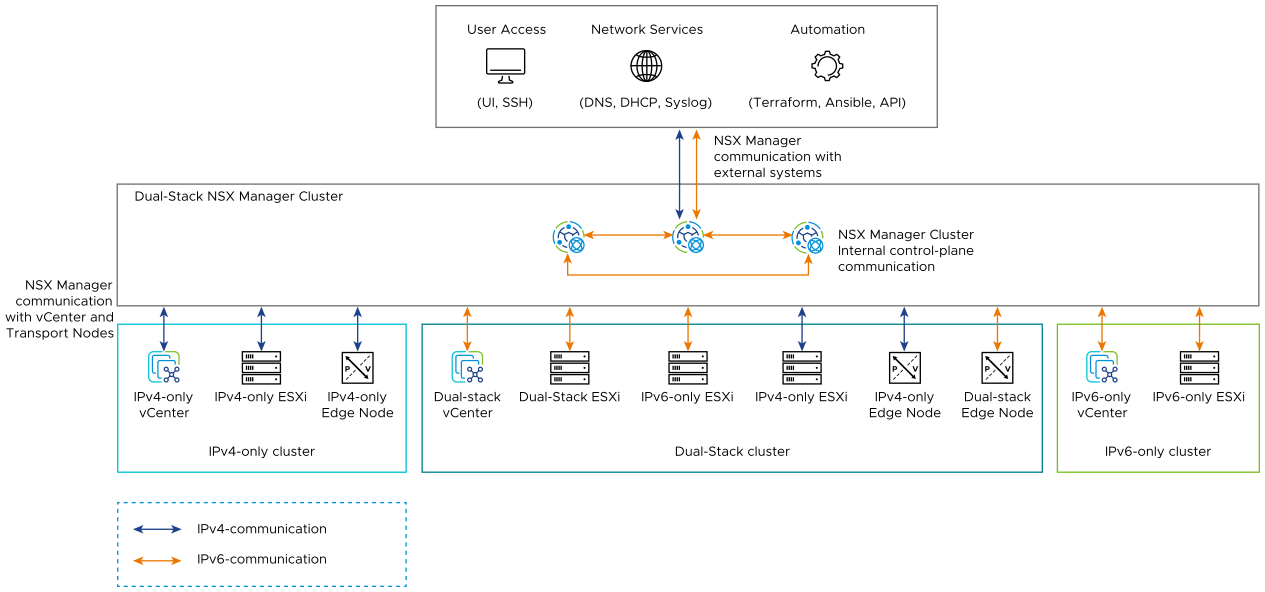NSX offers IPv6 addressing capability in the platform infrastructure for the management plane and control plane communication between NSX Managers and transport nodes.
The following communication and interface types provide support for IPv6:
- Communication between NSX Manager and external systems.
- Communication between NSX Manager and VMware vCenter.
- Communication within the NSX Manager cluster internal communication.
- Communication between NSX Manager and transport nodes in the control plane.

NSX Manager and External Systems Communication
The NSX Manager management interface can be configured with IPv4 only or with dual stack (both IPv4 and IPv6) addresses. The address type (IPv4 or IPv6) that is used to establish the connection is always used for the duration of the communication. For example:
- Users connecting to the NSX Manager UI using IPv6 or a FQDN which is resolved to an IPv6 address by a DNS server.
- API calls from users or automation tools using IPv6 or a FQDN which is resolved to an IPv6 address by a DNS server.
- Communication with VMware vCenter configured using IPv6 or a FQDN which is resolved to an IPv6 address by a DNS server.
For details on NSX Manager IPv6 configuration, see IPv6 Configuration Workflow for NSX Manager and Transport Node Communication.
The NSX Manager cluster virtual IP address (VIP) can be configured as IPv4 only, IPv6 only, or dual stack. For details, see Configure a Virtual IP Address for a Cluster.
NSX Manager and VMware vCenter Communication
Communication with VMware vCenter can be configured using IPv6 or a FQDN which is resolved to an IPv6 address by a DNS server.
For details on NSX Manager IPv6 configuration, see Add a Compute Manager.
NSX Manager and Transport Node Communication
These communications refer to the following:
- NSX Manager control/management internal communication.
- NSX Edge transport node control/management internal communication.
- ESX control/management internal communication.
IPv6 Tunnel Endpoint (TEP) Support
IPv6 TEP with Geneve encapsulation is supported for the transport node types of NSX Edge and ESXi hosts. This capability allows overlay transport zones to use IPv6 as the underlay transport protocol.
Requirements for IPv6 Management Plane to Control Plane Communication
For IPv6 communication to function properly, ensure the following requirements are met:
- Physical network nodes in the management network and data network should be IPv6 or dual stack capable. The physical network node interfaces as part of their topology should have IPv6 addresses and the underlay network should have IPv6 connectivity.
- External services such as syslog, DNS, NTP, etc. are configured to support IPv6 or dual stack.
- For greenfield deployments (new installations), the NSX Manager clusters, transport node management interfaces, and TEP (tunnel endpoint) addresses must be configured with IPv6 addresses.